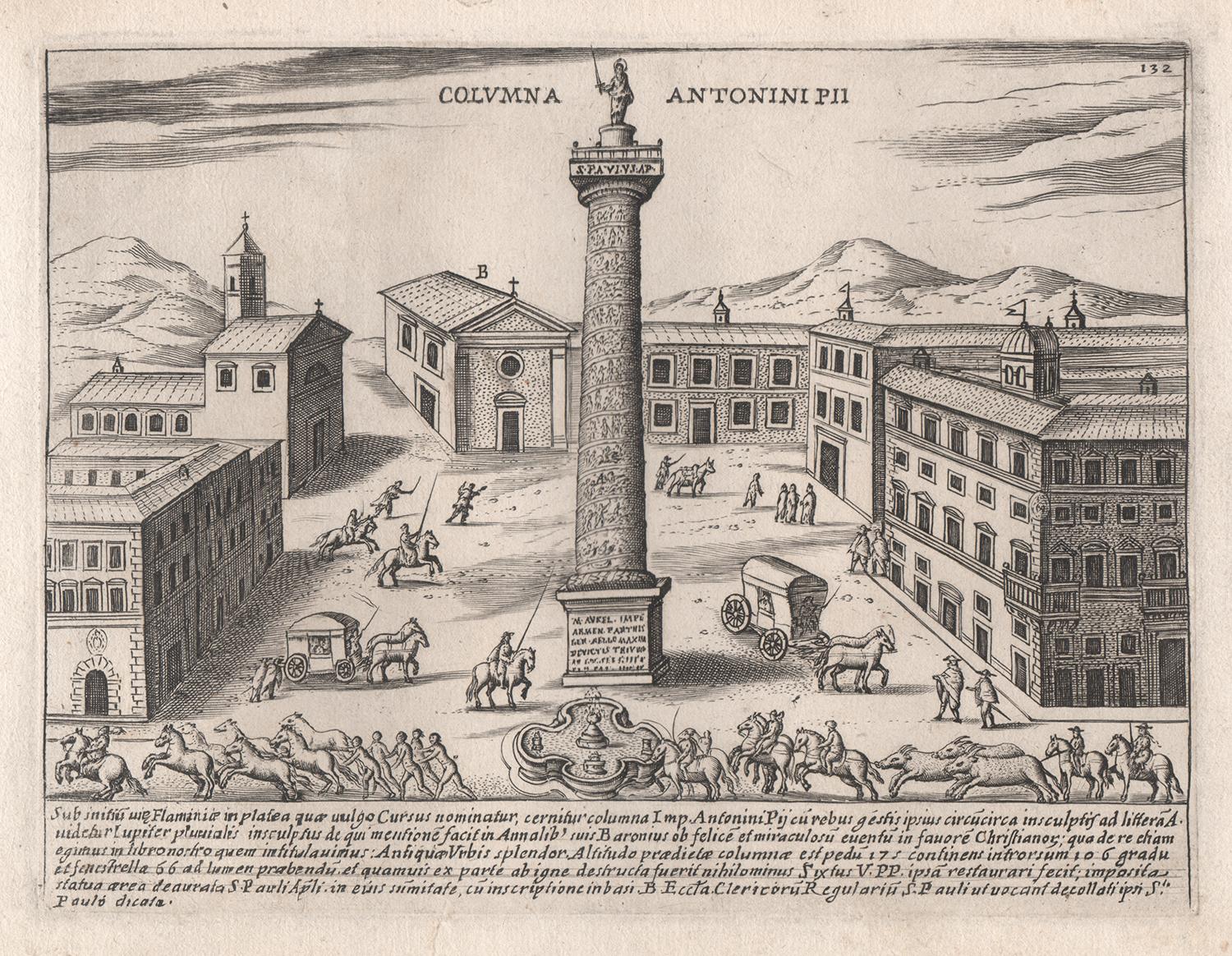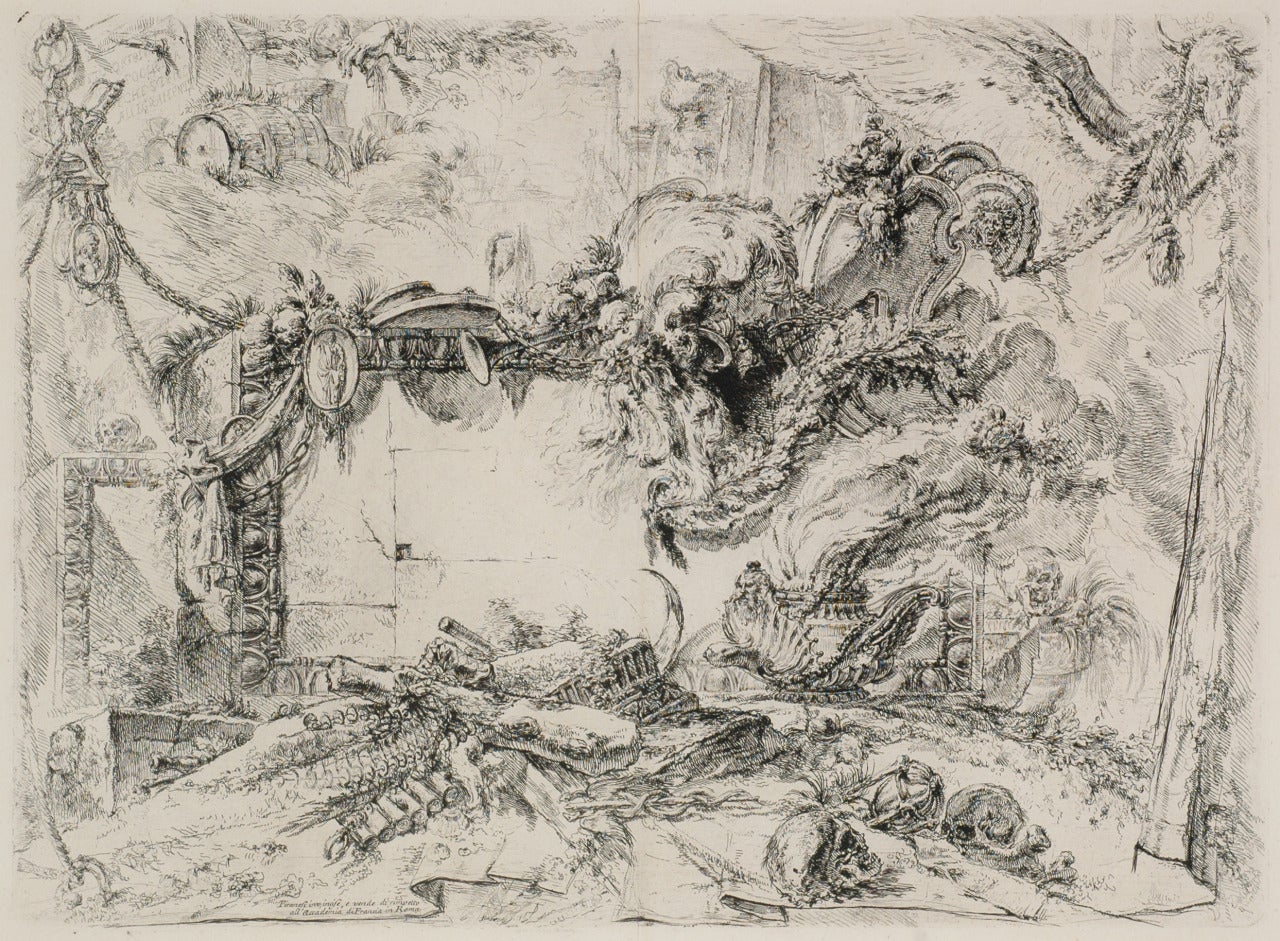Items Similar to "L'Apparition (The Vision), " an etching by Claude Lorrain
Want more images or videos?
Request additional images or videos from the seller
1 of 8
Claude Lorrain"L'Apparition (The Vision), " an etching by Claude Lorrain1630
1630
About the Item
"L'Apparition (The Vision)" is an original etching by Claude Lorrain (Claude Gellee). This print depicts a religious vision near the edge of a river. The publisher is Mannocci #5 and is in the collections of the Metropolitan Museum of Art and the Louvre.
4 1/4" x 6 1/2" art
18 3/8" x 20 7/8" frame
Biography
Claude Lorrain was born in c. 1604 into poverty in the town of Chamagne, Vosges in Lorraine—then the Duchy of Lorraine, an independent state until 1766 in northeastern France. He was one of five children. His name was Claude Gellée; however, he is known by the province in which he was born. He is often simply called Claude. Orphaned by the age of twelve, he went to live in Freiburg with an elder brother, Jean Gellée, a woodcarver. Claude went to Rome and then Naples from 1619 to 1621, where he apprenticed under Goffredo (Gottfried) Wals. He returned to Rome in April of 1625 and was apprenticed to Augustin Tassi.
Claude toured in Italy, France, and Germany, including his native Lorraine. Claude Deruet, painter to the Duke of Lorraine, kept him as an assistant for a year. He painted architectural subjects in Nancy at the Carmelite church.
In 1627, Claude returned to Rome. Two landscapes commissioned by Cardinal Bentivoglio earned him the patronage of Pope Urban VIII. From about 1627, he rapidly achieved fame as a painter of landscapes and seascapes. Apparently, he befriended his fellow Frenchman, Nicolas Poussin; together they would travel the Roman Campagna, sketching landscapes. Although both artists have been called landscape painters, they were history painters. In Poussin’s work, landscape is a backdrop for the figures that dominate the composition. Claude’s work is more landscape dominant, yet figures are always present.
To avoid the repetition of subjects and to combat copiers of his work, Claude made drawings of the pictures he sent to all his patrons. On the back of each drawing, he wrote the name of the purchaser. Called the Liber Veritatis (Book of Truth), the volume became a valuable study guide for Claude’s work.
Claude Lorrain died in Rome in November of 1682, leaving his wealth to his only surviving relatives, a nephew and an adopted daughter (possibly his niece).
Legacy
Landscape was not considered a serious subject for painting during Claude’s time. Despite his mastery of landscape and his legacy as one of the most accomplished landscape painters in Western art history, Claude was known during his time as a history painter, representing mythical and religious subjects. In seventeenth-century Europe, landscape, like still life and genre painting, reflected an aesthetic viewpoint that lacked moral seriousness. In the matter of the importance of landscape, Claude was prescient. He did not depict the uninhabited panoramas that were esteemed in later centuries, rather his works featured pastoral worlds populated by classical ruins or seascapes. To satisfy his patrons, his pictures include gods, heroes, and saints, even though his sketchbooks contain many drawings of the natural world. Joachim van Sandrart, a German artist and one of Claude’s biographers, described the artist’s working methods for capturing the essence of nature. He wrote that Claude “... studied his art with great seriousness and application; he tried by every means to penetrate nature, lying in the fields before the break of day and until night in order to learn to represent very exactly the red morning sky, sunrise and sunset and the evening hours. When he had well contemplated one or the other in the fields he immediately prepared his colours accordingly, returned home and applied them to the work he had in mind with much greater naturalness than anyone had ever done.”
John Constable described Claude Lorrain as “the most perfect landscape painter the world ever saw”, and declared that in Claude’s landscape “all is lovely- all amiable- all is amenity and repose; the calm sunshine of the heart.”
- Creator:Claude Lorrain (1604 - 1682, French)
- Creation Year:1630
- Dimensions:Height: 18.375 in (46.68 cm)Width: 20.875 in (53.03 cm)
- Medium:
- Movement & Style:
- Period:1630-1639
- Condition:
- Gallery Location:Milwaukee, WI
- Reference Number:
About the Seller
4.9
Platinum Seller
These expertly vetted sellers are 1stDibs' most experienced sellers and are rated highest by our customers.
Established in 1966
1stDibs seller since 2017
390 sales on 1stDibs
Typical response time: 1 hour
- ShippingRetrieving quote...Ships From: Milwaukee, WI
- Return PolicyA return for this item may be initiated within 14 days of delivery.
More From This SellerView All
- "Mythological Scene-Satyr & GoatHerder"an Original Etching signed by CastiglioneBy Giovanni Benedetto CastiglioneLocated in Milwaukee, WI"Mythological Scene--Satyr & Goat Herder" is an original etching signed by Italian artist Giovanni Benedetto Castiglione. It depicts a satyr lounging on the left and an approaching g...Category
Mid-17th Century Old Masters Landscape Prints
MaterialsEtching
- "Les Chevres (The Goats), " Etching Landscape by Claude Gelle Le LorrainBy Claude LorrainLocated in Milwaukee, WI"Les Chevres (The Goats)" is an original etching by Claude Lorrain. It depicts two pairs of goats and a shepherd watching over them. This etching is also in the collections of the Me...Category
1630s Old Masters Animal Prints
MaterialsEtching
- "Le Patre et la Bergere (The Herdsman & Shepherdess), " Etching by Claude GelleeBy Claude LorrainLocated in Milwaukee, WI"Le Patre et la Bergere (The Herdsman & Shepherdess)" is an etching by Claude Gellee (Le Lorrain). This etching is in the collections of the Metropolitan Museum and the British Museu...Category
Mid-17th Century Old Masters Landscape Prints
MaterialsEtching
- "Scene de Brigands, " Landscape Etching signed by Claude Gellee (Le Lorrain)By Claude LorrainLocated in Milwaukee, WI"Scene de Brigands" is an etching by Claude Gellee (Le Lorrain). This etching is in the collections of the Louvre and the Art Institute of Chicago. Publisher: Mannocci #11. 5" x 7...Category
Mid-17th Century Old Masters Landscape Prints
MaterialsEtching
- "Le Point de Bois (Rebecca & Eliezer), " etching by Claude Gellee (Le Lorrain)By Claude LorrainLocated in Milwaukee, WI"Le Point de Bois (Rebecca & Eliezer)" is an etching by Claude Gellee (Le Lorrain). This etching is in the collections of the Metropolitan Museum and the Louvre. Publisher: Mannocci ...Category
Mid-17th Century Old Masters Landscape Prints
MaterialsEtching
- "Le Bouvier (The Cowherd), " Landscape Etching by Claude Gelle Le LorrainBy Claude LorrainLocated in Milwaukee, WI"Le Bouvier (The Cowherd)" is an original etching by Claude Lorrain. It depicts a shepherd with a herd of cows. This etching is also in the collections of the Met and the Louvre. It ...Category
1630s Old Masters Landscape Prints
MaterialsEtching
You May Also Like
- Column of Antoninus Pius, Rome Italy. Jacobs Lauro 17th century engravingLocated in Melbourne, VictoriaLauro produced a series of engravings of the ancient monuments of Classical Rome with detailed descriptions in Latin below. 180mm by 240mm (plate mark)...Category
Early 17th Century Old Masters Landscape Prints
MaterialsEngraving, Etching
- Scene II, Le Nozze Degli DeiBy Stefano Della BellaLocated in Fairlawn, OHScene II, Le Nozze Degli Dei Etching, 1637 Signed in the plate lower left The scene depicts the initial moment when Diana is revealed, surrounded by her nymphs, celebrating a success...Category
1630s Old Masters Landscape Prints
MaterialsEtching
- View of the Ancient Structure built by Tarquinius Superbus called the Bel LidoBy Giovanni Battista PiranesiLocated in Fairlawn, OHView of the Ancient Structure built by Tarquinius Superbus called the Bel Lido, and like others built by Marcus Agrippa in the time of Augustus when he ...Category
1750s Old Masters Landscape Prints
MaterialsEtching
- Veduta dell'esterno della gran Basilica di S. Pietro in VaticanoBy Giovanni Battista PiranesiLocated in Fairlawn, OHVeduta dell'esterno della gran Basilica di S. Pietro in Vaticano (View of the Exterior of St. Peter's Basilica in the Vatican) Etching, 1748 From the first printing of the "Vedute di...Category
1740s Old Masters Landscape Prints
MaterialsEtching
- The Monumental TabletBy Giovanni Battista PiranesiLocated in Fairlawn, OHThe Monumental Tablet Etching, engraving, drypoint and burnishing, c. 1748 Series: Grotteschi (Grotesques, 4 plates) Original, unwashed condition. Excellent. Second edition first is...Category
1740s Old Masters Prints and Multiples
MaterialsEtching
- XXXIII Fig. I Avanzo del Tempio di Castore e PolluceBy Giovanni Battista PiranesiLocated in Fairlawn, OHXXXIII Fig. I Avanzo del Tempio di Castore e Polluce .View of the Remains of the Peristyle of the House of Nero, Etching, 1756 Signed in the plate (see photo) From: Le Antichità Roma...Category
1750s Old Masters Landscape Prints
MaterialsEtching





